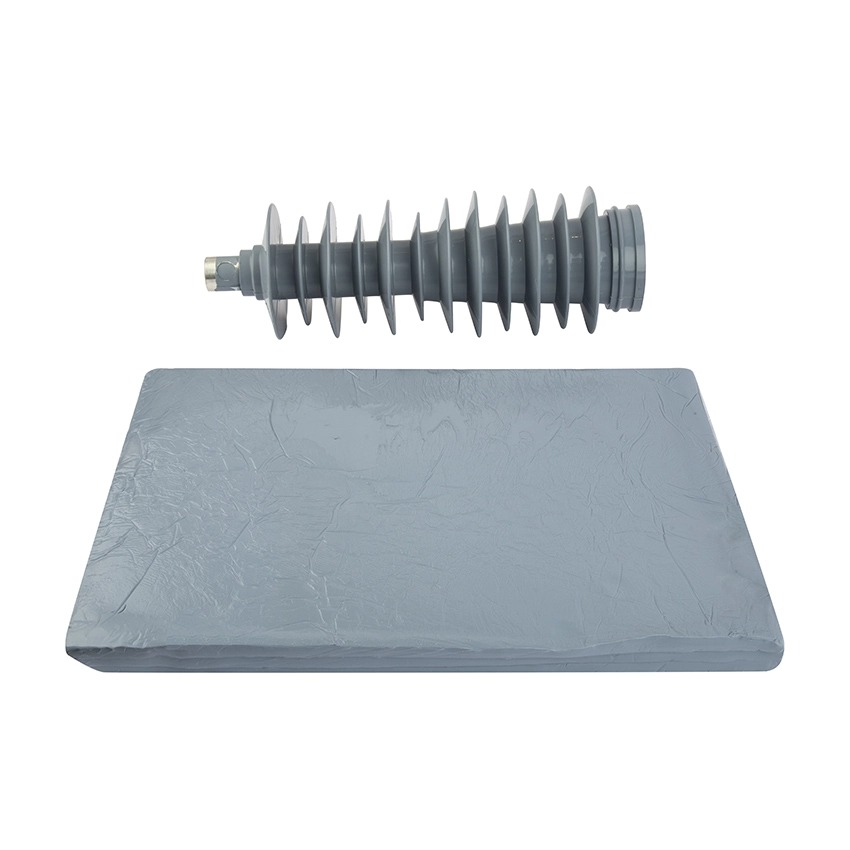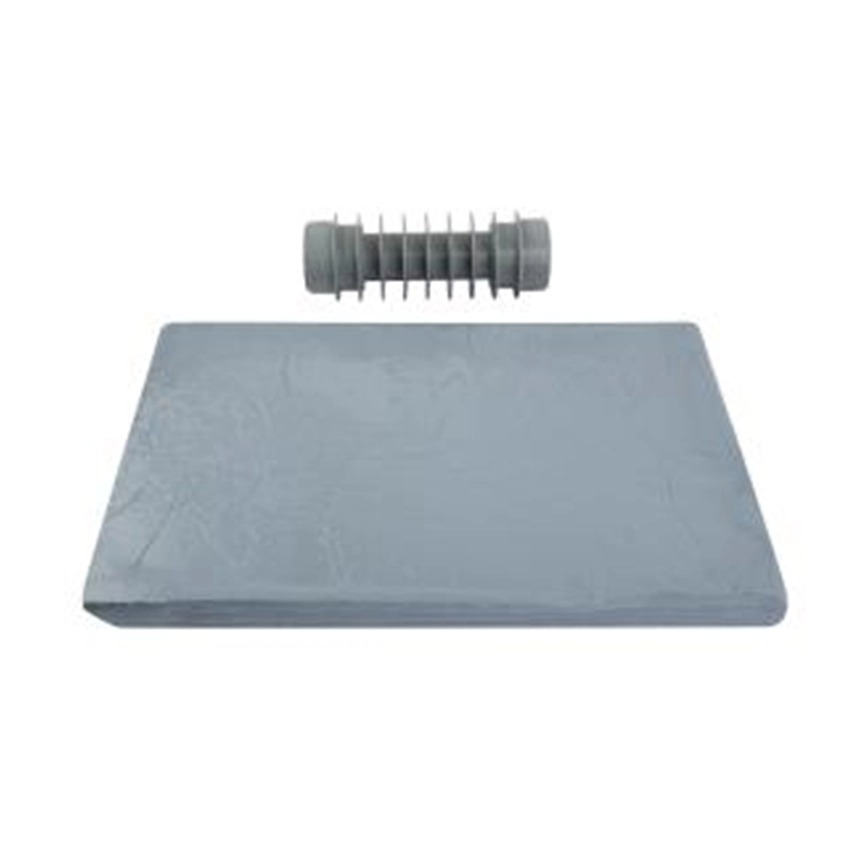Views: 254 Author: Site Editor Publish Time: 2025-08-29 Origin: Site











The world’s demand for reliable electricity transmission has never been higher, and with this growth comes the need for insulation materials that can withstand extreme operational conditions. Among the most promising solutions is UHV/EHV silicone rubber, a material that has gradually become a cornerstone in extra-high voltage (EHV) and ultra-high voltage (UHV) power transmission systems. But why is it so important? To answer this, one must consider the fundamental challenges of long-distance power transmission, the increasing environmental stresses on infrastructure, and the engineering demands of higher voltage levels. Silicone rubber, with its unique blend of hydrophobicity, thermal stability, and resistance to environmental aging, addresses these challenges more effectively than many traditional materials. This makes it indispensable in the development of resilient and efficient high-voltage networks designed to serve growing populations and industries.
For decades, ceramic and glass were the go-to materials for high-voltage insulation. While these materials offered mechanical strength and durability, they had notable weaknesses when exposed to pollution, salt fog, and rapid environmental changes. Maintenance requirements for such insulators were high, often demanding costly cleaning and replacement cycles. In contrast, UHV/EHV silicone rubber introduces several competitive advantages that directly respond to these operational concerns.
First and foremost is its intrinsic hydrophobicity. Unlike ceramics, silicone rubber repels water naturally, preventing continuous water films from forming on the surface. This property reduces leakage currents and prevents flashover during heavy rain or contamination events. Additionally, its lightweight structure simplifies installation, especially in remote or mountainous regions where transporting bulky ceramic units proves challenging. From a safety perspective, silicone rubber is resistant to shattering upon mechanical impact, a major risk associated with glass insulators.
Thermal endurance also plays a critical role. Power systems often operate in climates ranging from scorching deserts to icy tundras. Silicone rubber maintains its properties across a wide temperature range, avoiding brittleness in cold weather and softening in high heat. The combination of chemical stability, resistance to ultraviolet radiation, and long-term performance under stress positions silicone rubber as a superior option in almost all environmental conditions where conventional materials would degrade faster.

Reliability in power systems is not negotiable. Outages can cause enormous economic losses, disrupt essential services, and undermine public confidence. Environmental stress is one of the greatest threats to system reliability, particularly in regions prone to dust storms, coastal salt pollution, industrial emissions, or monsoon rains. UHV/EHV silicone rubber was specifically engineered to counter these risks by maintaining stable surface properties even under aggressive exposure.
The most critical feature here is the dynamic hydrophobicity transfer. When surface contamination occurs, low-molecular-weight silicone chains migrate to the surface, restoring water repellency over time. This self-healing mechanism ensures that even heavily polluted insulators recover their protective characteristics without the need for frequent maintenance. In addition, silicone rubber withstands corona discharges and partial discharges that might otherwise degrade organic insulators.
Its resistance to tracking and erosion is another defining benefit. Tracking, a form of permanent electrical damage caused by leakage currents, can severely shorten the lifespan of conventional insulators. Silicone rubber resists such damage, prolonging service life and enhancing reliability in high-voltage applications. These advantages explain why utilities worldwide are increasingly adopting silicone rubber insulators for UHV/EHV projects, particularly in coastal, desert, and heavily industrialized regions.
To fully understand the role of silicone rubber in UHV/EHV applications, one must examine its defining material properties. These characteristics not only distinguish it from alternatives but also explain why it is uniquely suited for high-voltage insulation.
| Property | Performance in UHV/EHV Silicone Rubber |
|---|---|
| Hydrophobicity | Excellent, with self-healing capabilities |
| Thermal Stability | Maintains integrity from -50°C to +200°C |
| Resistance to UV Radiation | High resistance, reducing surface aging |
| Weight | Significantly lighter than glass/ceramic |
| Electrical Resistance | High resistance to leakage and flashover |
| Mechanical Impact Strength | Non-shattering, safer in service |
| Resistance to Tracking | Superior performance against erosion |
Each of these properties serves a practical purpose in modern transmission networks. For example, thermal stability ensures consistent behavior across diverse climates, while hydrophobicity minimizes maintenance in polluted regions. The lightweight nature of silicone rubber also reduces tower load and makes handling easier during both installation and repair operations.
These combined features underscore why silicone rubber has become the material of choice for utilities aiming to build long-lasting, low-maintenance, and safe high-voltage systems.
High-voltage infrastructure projects often involve enormous investment costs, not only in materials but also in installation, maintenance, and long-term operation. At first glance, the cost of silicone rubber insulators may seem comparable or slightly higher than that of ceramic alternatives. However, a detailed cost-efficiency analysis reveals clear long-term advantages.
Firstly, lower maintenance costs stand out as a major factor. Conventional insulators require periodic cleaning, especially in polluted regions, to prevent flashovers. Silicone rubber’s self-restoring hydrophobicity minimizes such maintenance, saving utilities both labor and operational downtime. Secondly, longer service life reduces the frequency of replacement cycles. While ceramic insulators may last decades under ideal conditions, their performance deteriorates quickly in harsh environments, leading to higher replacement expenses. Silicone rubber’s durability against erosion and tracking ensures fewer replacements over the same operational span.
Additionally, the lightweight design cuts transportation and installation expenses. Towers can be designed with reduced mechanical load requirements, and helicopters or specialized equipment may not be necessary for deployment in remote areas. These savings accumulate significantly in large-scale UHV and EHV projects where thousands of insulators are installed. Taken together, these cost advantages demonstrate that silicone rubber is not merely a technological improvement but also a financially strategic choice.
The energy sector is undergoing a rapid transformation, driven by the twin goals of sustainability and reliability. Several future trends point toward even wider adoption of UHV/EHV silicone rubber in transmission systems.
One major trend is the integration of renewable energy sources. As wind and solar farms expand in remote regions, the need to transport electricity over long distances at ultra-high voltages grows. Silicone rubber, with its light weight and environmental resilience, is ideally positioned to support these projects. Another trend is urbanization, which increases demand for compact, efficient, and low-maintenance infrastructure within cities where outages can have widespread impacts. Silicone rubber insulators, with their high performance and minimal maintenance, address this requirement directly.
Climate change is also reshaping material choices. With more frequent extreme weather events, utilities are under pressure to deploy materials that can withstand unprecedented stress. Silicone rubber’s resistance to UV, salt, humidity, and temperature fluctuations makes it a preferred solution for climate-resilient power systems. Furthermore, innovations in nanocomposite silicone formulations are expanding the boundaries of material performance, promising even greater resistance to erosion, tracking, and mechanical stress. These technological advancements, combined with global infrastructure expansion, will likely cement silicone rubber’s role as the dominant insulation material in UHV and EHV systems.

Q1: What does UHV/EHV stand for?
UHV refers to ultra-high voltage, typically above 800 kV, while EHV refers to extra-high voltage, generally between 345 kV and 800 kV. Both represent critical levels in modern power transmission.
Q2: Why is hydrophobicity important in silicone rubber?
Hydrophobicity prevents the formation of continuous water films on the insulator surface, reducing leakage currents and minimizing the risk of flashovers during rain or contamination.
Q3: Can silicone rubber withstand extreme climates?
Yes. Silicone rubber maintains its properties in extreme cold and heat, as well as in areas with high UV radiation, humidity, or salt exposure.
Q4: How does silicone rubber impact maintenance costs?
Its self-healing hydrophobicity and resistance to erosion reduce the need for frequent cleaning and replacement, leading to significant cost savings over time.
Q5: Is silicone rubber environmentally sustainable?
While the production of silicone involves industrial processes, its long lifespan, reduced maintenance needs, and role in enabling renewable energy transmission indirectly contribute to sustainability goals.
When evaluating the requirements of modern and future power transmission systems—efficiency, reliability, cost-effectiveness, and resilience—UHV/EHV silicone rubber emerges as an unparalleled solution. Its unique combination of hydrophobicity, durability, lightweight design, and self-healing properties directly addresses the challenges posed by harsh environments and expanding electricity networks. While conventional materials like ceramic and glass will not vanish overnight, the clear trajectory of utility investments and global infrastructure projects indicates that silicone rubber is set to dominate the insulation market in the coming decades. In essence, it is not merely a material upgrade; it represents a paradigm shift toward smarter, more resilient, and more sustainable power transmission.